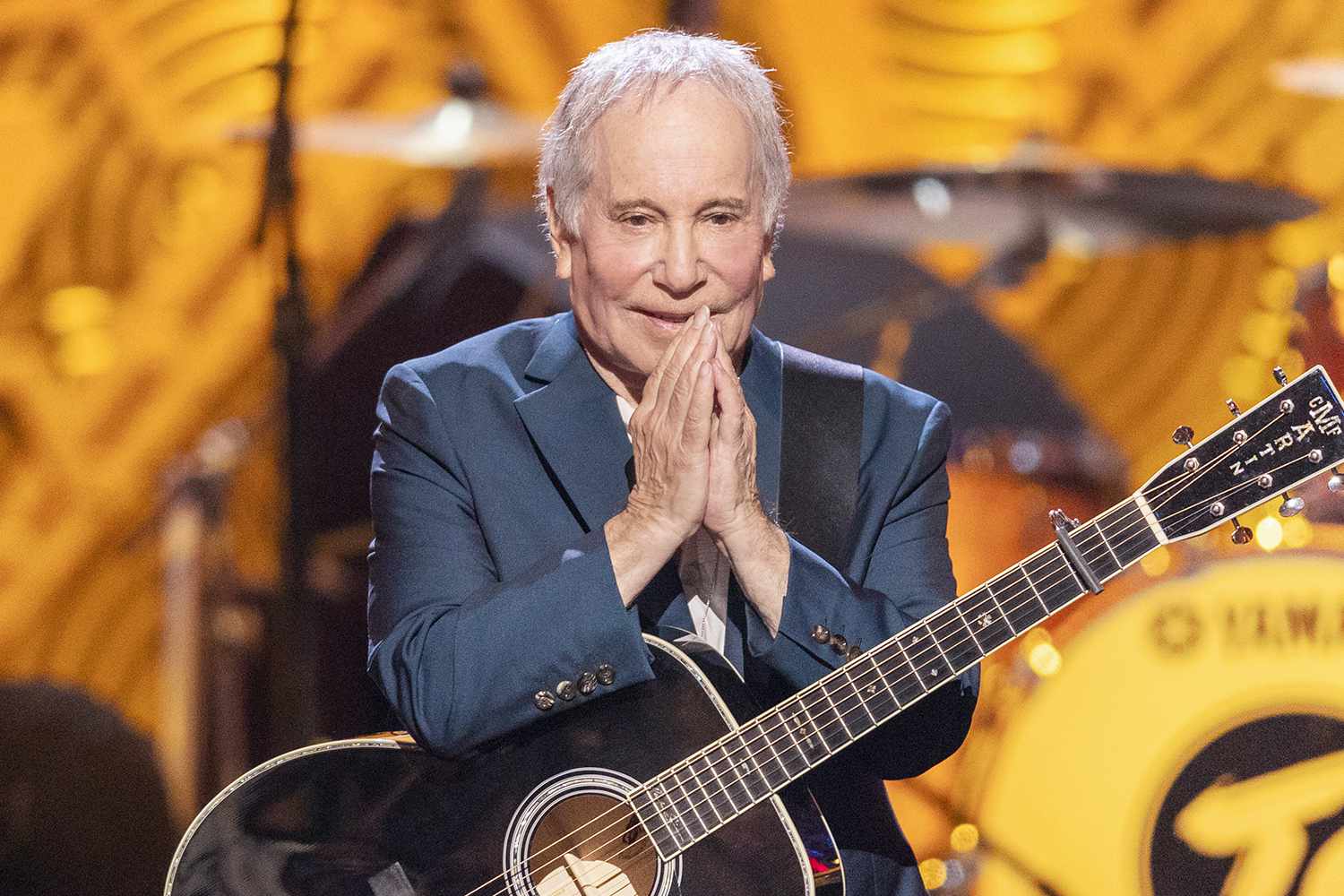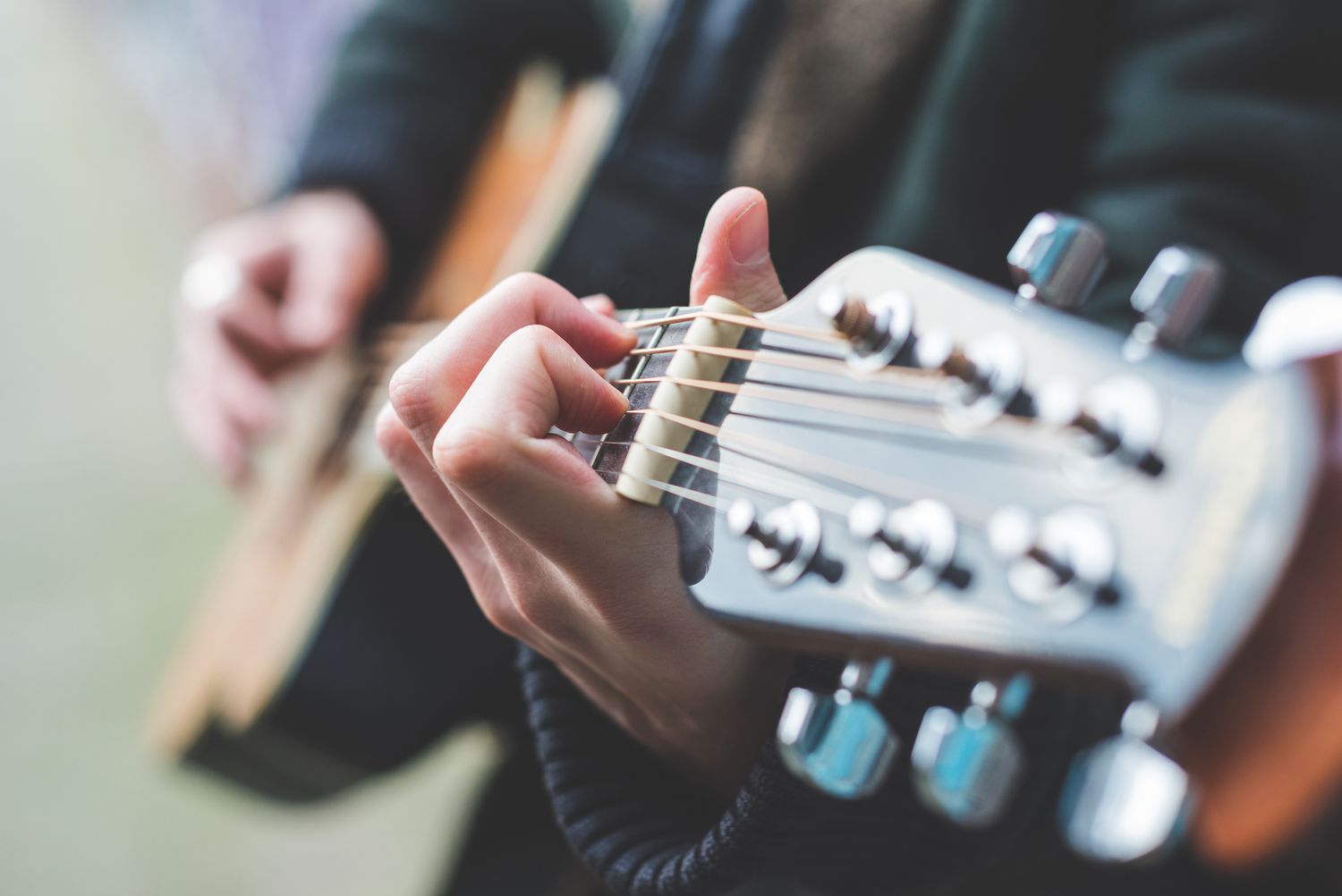Home>Production & Technology>Cover Song>Why Is It Called A Cover Song


Cover Song
Why Is It Called A Cover Song
Modified: January 22, 2024
Discover the origin and significance of the term "cover song." Learn why musicians choose to reinterpret popular tracks and bring a fresh perspective to beloved tunes.
(Many of the links in this article redirect to a specific reviewed product. Your purchase of these products through affiliate links helps to generate commission for AudioLover.com, at no extra cost. Learn more)
Table of Contents
Introduction
Music has a unique ability to touch our emotions, bring back memories, and connect us with the world around us. One of the fascinating aspects of music is the way artists interpret and reimagine songs originally performed by others. This artistic process is known as covering a song.
A cover song refers to a rendition or performance of a previously recorded song by an artist or group other than the original creator. It involves taking an existing composition and presenting it in a different musical style, arrangement, or interpretation. Cover songs have been a significant part of the music industry for decades, allowing artists to pay tribute to their musical influences while putting their unique spin on familiar tunes.
Cover songs have a rich history that spans various genres and eras, making them an essential element of music culture. From heartfelt acoustic versions of popular hits to energetic rock reinterpretations, cover songs have the power to captivate audiences and create new musical experiences.
In this article, we will delve into the world of cover songs and explore their historical background, the reasons why artists choose to cover songs, the impact and importance of cover songs, the copyright and legal considerations surrounding cover songs, famous and memorable cover songs, as well as contemporary artists who are known for their exceptional cover renditions.
So, let’s embark on this musical journey and unravel the fascinating world of cover songs.
Definition of a Cover Song
A cover song is a rendition or interpretation of a previously recorded song by an artist or group other than the original performer or composer. It involves taking an existing composition and presenting it in a new light, often with alterations in musical style, arrangement, or performance techniques. The cover version can be faithful to the original or completely transform the song, giving it a fresh perspective.
When an artist chooses to cover a song, they put their own artistic spin on it, adding their unique style, voice, and musical interpretation. This could involve changing the tempo, key, instrumentation, or vocal delivery, resulting in a distinct sound that distinguishes it from the original.
Cover songs can be recorded and released as standalone tracks or included on an album. They can also be performed live in concert settings, allowing artists to engage with their audience in a different way. Cover songs are a creative expression and a way for artists to pay homage to their musical influences, showcase their vocal or instrumental abilities, or simply bring new life to a beloved song.
Cover songs can be found in various music genres, from pop and rock to jazz, country, and beyond. Artists from all backgrounds and levels of fame choose to cover songs, whether they are emerging talents or established superstars. It is a way for artists to connect with listeners on a familiar level while also demonstrating their artistry and musical versatility.
Cover songs have become an integral part of the music industry, with many artists gaining recognition and success through their cover versions. Some cover songs have even surpassed the popularity of the original, becoming iconic in their own right. Whether it’s a heartfelt acoustic rendition or a high-energy reinterpretation, cover songs offer a unique listening experience that showcases the diversity and creativity within the world of music.
Historical Background
The practice of covering songs has a long and storied history that dates back centuries. The concept of performing and reinterpreting existing songs has been a part of musical traditions across different cultures around the world.
In the early days of popular music, the notion of covering songs was often associated with folk music and traditional tunes. Musicians would pass down songs orally or through sheet music, and different artists would put their own twist on these songs, adapting them to suit their regional styles and preferences.
In the mid-20th century, with the rise of recorded music and the advent of radio, covering songs took on a new meaning. Artists began recording their versions of popular songs, helping to spread the popularity of those songs to a wider audience. This practice was especially prevalent in genres such as blues, jazz, and country, where musicians would often reinterpret songs from their musical predecessors.
One notable example of the historical influence of cover songs is seen in the early days of rock ‘n’ roll. Many rock pioneers, such as Elvis Presley and The Beatles, gained recognition by covering songs by artists who came before them. These covers served as gateways for audiences to explore the original artists’ works, and in some cases, helped revive interest in forgotten or overlooked songs.
As the music industry continued to evolve, cover songs became a way for artists to connect with their audience and showcase their own artistry. Many artists would include a cover song on their albums as a way to pay tribute to their influences or give listeners a familiar song amidst their original compositions.
In recent years, with the popularity of digital platforms and the ease of accessing music, covering songs has exploded in popularity. Social media sites like YouTube and platforms like Spotify and Apple Music have allowed emerging artists to gain exposure through their unique cover renditions. Some cover songs have gone viral, propelling the artist to fame and success.
Overall, the historical background of covering songs showcases the enduring practice of artists reimagining and making songs their own. It highlights the importance of musical connections and influences, as well as the evolution of popular music through the reinterpretation of existing works.
Reasons for Covering Songs
Artists choose to cover songs for a variety of reasons, each motivated by their own artistic goals and inspirations. Here are some common reasons why artists decide to cover songs:
- Paying homage to musical influences: Covering songs is a way for artists to honor and pay tribute to the musicians and songs that have influenced them throughout their career. It allows them to showcase their appreciation for the artists who came before them and to share their love for a particular song with their audience.
- Showcasing vocal or instrumental abilities: Covering songs provides artists with an opportunity to exhibit their vocal range, technical expertise, or instrumental skills. It allows them to demonstrate their versatility and artistry by interpreting a well-known song in their own unique way.
- Connecting with the audience: Cover songs are often familiar to listeners, and they can serve as a bridge between the artist and the audience. By performing a cover version of a beloved song, artists can engage their audience emotionally and create a connection through shared musical experiences.
- Introducing new audiences to a song: Some artists choose to cover well-known songs with the intention of introducing them to a new generation of listeners. By putting their own spin on a classic, they bring attention to the original song and its significance, ensuring that it continues to resonate with audiences for years to come.
- Experimenting with musical style: Covering songs allows artists to explore different genres and musical styles outside of their usual repertoire. It provides an opportunity to experiment with arrangements, instrumentation, and production techniques, bringing a fresh perspective to a familiar tune.
- Reviving forgotten or overlooked songs: Cover songs can breathe new life into songs that may have been forgotten or overlooked. Artists may choose to cover a lesser-known song they feel deserves more recognition, revitalizing it for a new audience and giving it a second chance to be appreciated.
These are just a few of the many reasons why artists choose to cover songs. Ultimately, covering a song allows artists to express themselves creatively, connect with their audience, and bring their own unique perspective to beloved musical compositions.
Impact and Importance of Cover Songs
Cover songs have a significant impact on the music industry and play a crucial role in the artistic landscape. Here are some of the key ways in which cover songs make an impact:
- Discovering new music: Cover songs serve as a gateway for listeners to explore different genres and discover original songs they may not have been exposed to otherwise. Through a cover version, artists can introduce their audience to songs, artists, and musical styles they may have overlooked.
- Bridging generations: Cover songs have a unique ability to bridge the generation gap by connecting listeners from different age groups. Older generations may appreciate hearing familiar songs reimagined by younger artists, while younger listeners gain exposure to classic tunes in a modern, relatable way.
- Showcasing diverse interpretations: Cover songs allow artists to bring their unique interpretations and artistic styles to the forefront. This showcases the diversity and creativity within the music industry and encourages listeners to appreciate the many ways a song can be approached and performed.
- Revitalizing older compositions: Cover songs can bring new life and relevance to older compositions that may have lost popularity over time. Artists who cover songs give these compositions a fresh perspective, reintroducing them to the public and helping them regain recognition.
- Creating cultural connections: Through cover songs, artists can create cultural connections by embracing different musical traditions and styles. It allows for collaboration and cross-pollination of genres, promoting cultural exchange and fostering a sense of unity among artists and listeners.
- Expressing personal identity: Cover songs can become a creative expression of an artist’s personal identity and musical style. By putting their own spin on a song, artists can showcase their vocal range, instrument skills, and unique artistry, allowing their audience to connect with them on a deeper level.
- Providing a fresh take on familiar songs: Cover songs offer a new perspective on familiar songs, bringing fresh arrangements, musical styles, and vocal interpretations. This allows listeners to experience songs they love in new and exciting ways, keeping the music fresh and engaging.
In addition to their impact on listeners, cover songs also impact the careers of artists. A well-executed cover song can gain attention, attract new fans, and even lead to opportunities for collaborations or record deals.
Overall, cover songs hold great importance in the music industry as a means of artistic expression, discovery, and connection. They contribute to the ever-evolving nature of music and highlight the incredible creativity and talent of artists across generations.
Trends in Cover Songs
Over the years, cover songs have evolved and adapted to the changing landscape of the music industry. Several trends have emerged that reflect the current preferences and tastes of both artists and listeners. Here are some notable trends in cover songs:
- Mash-ups and Medleys: A popular trend in cover songs is the creation of mash-ups and medleys. Artists combine multiple songs, often from different genres or time periods, to create a unique musical collage. These mash-ups and medleys showcase the artist’s creativity and ability to seamlessly blend different musical elements.
- Genre-crossing covers: Artists are increasingly exploring cover songs outside of their own genre. This trend allows for interesting and unexpected reinterpretations of songs, introducing audiences to new genres and expanding the boundaries of musical expression.
- Acoustic and stripped-down versions: Many artists opt for acoustic or stripped-down versions of songs for their cover renditions. This trend emphasizes the raw emotions and vulnerability of the original composition, highlighting the artist’s vocal abilities and storytelling prowess.
- Collaborative covers: Collaborations between artists have gained popularity in cover songs. Artists from different backgrounds and genres come together to create unique interpretations, combining their voices and styles to produce a fresh take on the original song.
- Online cover culture: The rise of digital platforms and social media has led to the growth of an online cover culture. Artists regularly share their cover renditions on platforms like YouTube or Instagram, allowing them to reach a wider audience and gain recognition through their unique interpretations.
- Cross-cultural covers: It is not uncommon to see artists covering songs from different cultures and languages. This trend promotes cross-cultural understanding and appreciation, as artists embrace music from diverse backgrounds and bring their own artistic flair to the songs.
- Reimagining iconic songs: Artists often take on the challenge of reimagining iconic songs that have become embedded in popular culture. These cover versions offer a fresh perspective on timeless classics, capturing the imagination of both nostalgic fans and a new generation of listeners.
These trends demonstrate the ever-evolving nature of cover songs, reflecting the creativity and ingenuity of artists in interpreting and reimagining existing compositions. They allow for artistic experimentation and contribute to the ongoing musical conversation between artists and listeners.
Copyright and Legal Issues with Cover Songs
When it comes to covering songs, there are important copyright and legal considerations that artists must be aware of to ensure they are operating within the boundaries of the law. Here are some key points regarding copyright and legal issues with cover songs:
Obtaining a Mechanical License: In most countries, including the United States, artists need to obtain a mechanical license to legally distribute and sell their cover recordings. A mechanical license grants the artist the rights to reproduce and distribute the original composition. It is important to obtain this license from the appropriate music publisher or licensing agency before releasing a cover version.
Compulsory License: In some jurisdictions, a compulsory license may be available for cover songs. This means that artists can perform and release a cover version of a song without seeking explicit permission from the original copyright holder. However, they must still follow specific guidelines, such as providing proper credits and paying royalties.
Royalty Payments: Artists who release cover songs are typically required to pay royalties to the original copyright holders. These royalties are usually paid through a mechanical licensing agency, such as the Harry Fox Agency in the United States, which collects and distributes the royalties on behalf of the copyright owners.
Derivative Work Considerations: When creating a cover song, artists need to be mindful of transforming the original composition enough to qualify as a derivative work. Simply replicating the original song without adding significant original elements may infringe on the copyright of the original work.
Clearing Samples and Interpolations: If artists plan to use samples or interpolations of other copyrighted works within their cover song, they need to obtain proper licenses and permissions. This applies to both the original composition and any recorded elements used in the cover version.
Performing Rights Organizations: Artists who perform cover songs in public may also need to be affiliated with a performing rights organization (PRO). PROs protect the rights of artists and collect performance royalties on their behalf when songs are publicly performed or broadcasted.
International Copyright Laws: Artists should be aware that copyright laws can vary from country to country. If they plan to release cover songs internationally, it is important to research and comply with the copyright laws of the target country to avoid any legal issues.
Being aware of these copyright and legal issues ensures that artists can release cover songs in a legitimate and ethical manner, respecting the rights of the original copyright holders while still expressing their creativity and artistry.
Famous and Memorable Cover Songs
Over the years, there have been numerous cover songs that have achieved fame and left a lasting impression on listeners. These cover versions have become iconic in their own right, often surpassing the popularity of the original recordings. Here are some examples of famous and memorable cover songs:
“Hallelujah” – Jeff Buckley: Jeff Buckley’s rendition of Leonard Cohen’s “Hallelujah” is widely regarded as one of the greatest cover songs of all time. His hauntingly beautiful vocals and emotive delivery brought new life to the song, solidifying its place as a beloved classic.
“Respect” – Aretha Franklin: Aretha Franklin’s powerful and soulful interpretation of Otis Redding’s “Respect” transformed the song into a feminist anthem. Her energetic and passionate rendition propelled her to stardom and solidified her status as the Queen of Soul.
“I Will Always Love You” – Whitney Houston: Whitney Houston’s rendition of Dolly Parton’s “I Will Always Love You” for the soundtrack of the film “The Bodyguard” became a worldwide sensation. Houston’s stunning vocal range and emotional performance made this cover a timeless classic.
“All Along the Watchtower” – Jimi Hendrix: Jimi Hendrix’s electrifying cover of Bob Dylan’s “All Along the Watchtower” is often regarded as one of the best cover versions in rock music history. Hendrix’s guitar prowess and unique interpretation elevated the song to new heights.
“Johnny B. Goode” – Chuck Berry: Chuck Berry’s energetic and influential cover of “Johnny B. Goode” showcased his signature guitar skills and defined the sound of rock and roll. This cover became a cultural touchstone and an anthem for a generation.
“Smooth Criminal” – Alien Ant Farm: Alien Ant Farm’s cover of Michael Jackson’s “Smooth Criminal” brought a fresh rock twist to the iconic pop hit. Their energetic performance and catchy rendition gained significant popularity and became one of the most recognizable cover songs of the 2000s.
“Nothing Compares 2 U” – Sinead O’Connor: Sinead O’Connor’s powerful interpretation of Prince’s “Nothing Compares 2 U” remains one of the most emotionally gripping cover songs. Her vulnerable and raw delivery captivated millions of listeners and made it an unforgettable rendition.
“The Man Who Sold the World” – Nirvana: Nirvana’s unplugged rendition of David Bowie’s “The Man Who Sold the World” showcased Kurt Cobain’s raw talent and added a haunting, acoustic quality to the song. This cover solidified Nirvana’s status as one of the defining bands of the grunge era.
These are just a few examples of the many famous and memorable cover songs that have left a lasting impact on music history. These covers demonstrate the power of reinterpretation and the ability of artists to create unique and unforgettable versions of beloved songs.
Contemporary Artists Known for Cover Songs
In today’s music landscape, many contemporary artists have gained recognition for their exceptional cover songs. These artists have demonstrated their talent and creativity by delivering unique and captivating renditions of popular songs. Here are a few notable contemporary artists known for their cover songs:
Postmodern Jukebox: Postmodern Jukebox, led by Scott Bradlee, is a musical collective known for their vintage-inspired covers of modern hits. They infuse songs with different genres like jazz, swing, and doo-wop, creating fresh and nostalgic arrangements. Postmodern Jukebox’s covers have gained a massive following on YouTube and have helped revive interest in classic musical styles.
Ed Sheeran: Ed Sheeran is not only a gifted singer-songwriter but also known for his remarkable ability to cover songs. He has delivered notable covers on various platforms, showcasing his versatility as an artist. Sheeran’s acoustic interpretations and heartfelt performances have garnered acclaim from fans and critics worldwide.
Kacey Musgraves: Kacey Musgraves is an artist known for her distinctive country-pop sound. She has showcased her talent for covering songs across different genres, often putting her own spin on iconic tracks. Musgraves’ unique vocal style and creative interpretation bring a fresh perspective to the songs she covers.
Pentatonix: Pentatonix is an a cappella group renowned for their stunning vocal arrangements and harmonies. They have gained popularity through their covers of popular songs, often blending different genres and adding their unique vocal techniques. Pentatonix’s cover songs have amassed millions of views on YouTube, showcasing the power of their voices and musical innovation.
John Mayer: John Mayer is not only an accomplished singer-songwriter but also highly regarded for his guitar skills. He has gained recognition for his soulful and skillful cover performances, incorporating his exceptional guitar playing and versatile vocals. Mayer’s cover songs often display his proficiency in various musical styles, ranging from blues to pop and beyond.
Emeli Sandé: Emeli Sandé is a powerhouse vocalist known for her soulful and emotive performances. She has delivered remarkable cover songs, infusing them with her unique vocal stylings and adding her heartfelt expressions. Sandé’s interpretations have garnered praise for their raw and deeply moving performances.
Boyce Avenue: Boyce Avenue is a popular band known for their acoustic covers of popular songs. They have gained a massive following on YouTube for their stripped-down arrangements and tight harmonies. Boyce Avenue’s cover songs offer a refreshing take on familiar tracks, demonstrating their musical prowess and captivating their audience.
These contemporary artists have proven their talent and creativity through their exceptional cover songs. Their interpretations showcase their ability to make a song their own while captivating listeners with their unique styles and performances.
Conclusion
Cover songs have a deep-rooted presence in music culture, allowing artists to pay homage to their musical influences, showcase their talent, and connect with audiences on a familiar level. Throughout history, cover songs have evolved and adapted, reflecting changing musical tastes and artistic innovations.
From Jeff Buckley’s haunting rendition of “Hallelujah” to Postmodern Jukebox’s vintage-inspired covers, famous and memorable cover songs have left an indelible mark on the music industry. These covers have the power to bring new life to forgotten compositions, bridge generations, and create cultural connections.
Contemporary artists like Ed Sheeran, Kacey Musgraves, and Pentatonix continue to showcase the relevance and creativity of cover songs in today’s music landscape. Through their unique interpretations, they demonstrate the ability to reimagine well-known songs and make them their own, captivating listeners along the way.
However, it is crucial to recognize the copyright and legal considerations surrounding cover songs. Artists must navigate the complexities of obtaining licenses, clearing samples, and ensuring compliance with international copyright laws to release cover versions legitimately.
In conclusion, cover songs play a vital role in the music industry, providing a platform for artists to express themselves creatively, introduce listeners to new music, and create connections through shared musical experiences. Whether it’s paying homage to musical influences, showcasing versatility, or breathing new life into beloved songs, cover songs continue to captivate audiences and shape the ever-evolving landscape of music.











